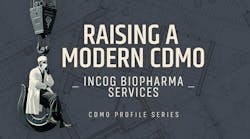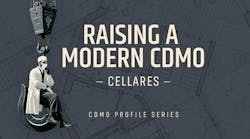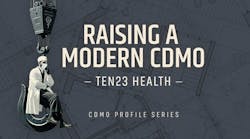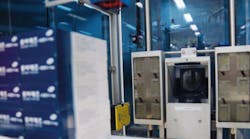Janet Woodcock was quite clear in her 2013 plenary speech at the national ISPE meeting in Washington, D.C. The Food and Drug Administration (FDA), she said, is interested in creating a quality culture inside organizations “from the shop floor to the boardroom.” This is not a new message, but the urgency for doing it is being translated into action, with the addition of hundreds of millions of additional budget dollars to the FDA budget in 2014 from the GDUFA (Generic Drug Users Fee Amendment) statutes, at a time when most government agencies are seeing budget cuts¹.
The vision of a quality culture across an entire organization is even more critical to FDA for both the pharmaceutical industry and their contract manufacturing organizations (CMOs) to execute than ever before, given that global manufacturing supply chains are used to manufacture 70% of the generic prescriptions used by the U.S. public every day. The FDA is going to “measure, incentivize and reward” the companies that implement a quality culture. And what the FDA says, industry executes.
WHAT ABOUT THE LINE WORKER?
So the question becomes: What is meant by across an entire organization when discussing quality culture? After all, don’t we usually hear that to be successful, a company’s strategic vision must be driven from the top, and communicated articulately, with passion and vigor, by a company’s CEO down through the organization? There are hundreds of examples of great companies whose CEOs are synonymous with a company’s excellent execution of a CEO’s vision. Think about the late Steve Jobs of Apple, or James Dimon, CEO of JP Morgan Chase, both dynamic speakers with clear and passionate vision. But what about the line workers — the operators and technicians who make the products? Do you think they’ve heard the speech? In the pharmaceutical and medical device manufacturing industry (which have huge levels of manual interventions), it is obviously more critical that those who are charged with “making safe and effective medicines and devices for the public,” understand what a quality culture truly means for them, in their jobs, every day.
As we have moved two centuries beyond the Industrial Age and decades past the age where U.S. manufacturing dominated the global economy, it might be expected that there be less attention paid to the role of the hands-on manufacturing, shop-floor employee. How often do we hear about a strategic vision being executed from the workforce of an organization? Yet, how can a true quality culture, developed to manufacture safe medicine, exist without the buy-in and understanding of the hands that are producing those products — the workforce operators and technicians?
In this era of a globalized manufacturing industry, it’s imperative that strategic vision be focused from the bottom up. There are guidelines already in place, of course, through Standard Operating Procedures (SOPs) and current Good Manufacturing Practices (cGMPs). But these are not enough, as evidenced by an unacceptably high level of product recalls, which impacts the continuity of supply of key drugs and devices to the public. SOPs are looked at early on when an operator learns a process, but blind repetition of said process does not lead to continuous improvement; instead it can breed boredom and the likelihood of mistakes over time. Poor handling and a laxity of attention to following the SOPs are not deliberate — it may simply be a lack of knowledge and the lack of a quality culture that encourages learning more about the “Whys of cGMP” that underpin the “How of SOPs” in making safe and effective medicines.
There is value in educating technicians and manufacturing employees to better understand the Whys of cGMP. FDA comments aside, it is simply good business to address a continuous quality improvement mindset, and to institute consistent quality-based learning — learning that goes well beyond senior operators demonstrating SOPs to the junior operators in a plant. Instead, linking your operations to the good science and good data on which those processes are based, and showing all employees why processes are performed the way the SOPs are written, creates an environment that invites your manufacturing staff to interact, question and potentially spot quality risks before they become a problem.
COMMERCIAL ADVANTAGES FOR CMOs
CMOs in particular will find a real advantage in the marketplace if an operator education program is visible, measurable and consistent. Showing existing and potential new pharmaceutical partners that such training is in place can be a true differentiator when tendering for business. While their pharmaceutical clients will audit and verify the quality and safety of products being produced on their behalf, few will mandate training programs for their CMO’s operators even though they often have in-house customized training for many in-house, manufacturing-specific scenarios. So CMOs need to be able to step up to the plate themselves and show their own commitment to quality training programs for their operators and technicians and demonstrate the added-value of their overall commercial offering rather than simply its price when trying to expand their customer base.
To truly showcase a company’s dedication to quality culture, the manufacturing floor operator training must go beyond just an understanding of SOPs, to more comprehensive understanding of the “Whys of cGMP.” Gerry Creaner understands this very well. As CEO of a company that uses short, precise videos to convey the quality message to a global audience in pharmaceutical and medical device manufacturing, GetReskilled’s CEO says, “Where FDA is focused, industry will align.” He goes on to say that “early adopters of this comprehensive view of quality culture development are clearly going to benefit from the FDA’s stated intention to measure, incentivize and reward those companies that implement a quality culture. The pharmaceutical industry has been mandated for some time now with the intent to build continuous quality improvement into their manufacturing, now that their quality culture is going to be measured, it’s going to happen from the ground floor up. And as sure as night follows day, rankings of companies and their manufacturing locations (however they enter the public domain) will drive this initiative.”
Online video training (see sidebar) allows operators to watch daily or weekly short 5-10 minute videos that describe the thinking behind cGMPs. One of the training modules explains, for example, why it is important to move slowly and deliberately inside a cleanroom — because the airflow inside the room is designed for calm, methodical handling, not for quick motion and movement, or excited hand-waving while an operator shares the latest weekend football scores. The take-away: Disruption of the airflow too dramatically can be detrimental to the safety and efficacy of the products, by increasing the potential risk of contamination. Another module emphasizes that the medicines — the products being handled by the operators daily, are being ingested or injected by operators’ loved ones — parents, wives, husbands, sons and daughters. This module teaches that the job they do each day is always patient-centric, everything from gowning up, or putting on a hairnet properly. “It seems obvious, but developing a patient-centric philosophy and showing who will use the products being manufactured, go a long way toward driving the quality message,” says Creaner.
It seems intuitive to understand how training operators about why certain manufacturing practices make safer medicine, will lead to higher quality products, but that is not the full story about how manufacturing quality training can help organizations spot potential quality risks before they become issues.
The learning industry has migrated from a classroom environment to an online environment, with content delivered in smaller, bite-sized pieces over a longer period of time. This is perfect for the manufacturing workforce, and operators and technicians will value the ability to learn at their own pace using on-line learning.
1. Look for learning programs that focus on the Whys, not simply the Whats.
2. Look for video learning that can be delivered in small, 5-10 minute snippets. This allows for a more realistic schedule of daily interaction than longer courses.
3. Make sure the learning package chosen can grow with your company; multiple local language capability is key.
4. Ask for easy customization. If you have a particular need, ask about the time and cost to customize. If the online learning focuses on the pharmaceutical and medical device industry, this should not be a problem.
5. Ensure that the Support function is available across time zones, 24/7.
6. Look for the ability to track students’ participation.
7. Simple reporting functions are key for CMOs who will want to want to showcase training results for use in marketing.
8. Look for training packages that allow operators to learn at their own pace, but allow managers to track and see their progress.
Look for learning that encourages the application of knowledge and a curriculum that encourages written responses that display acquired knowledge, rather than standardized multiple choice testing. The idea is to encourage learning about the quality process, and engagement/writing/instructor interaction is far better at achieving learning than requirements to fulfill a certain grade on a multiple choice test.
Differences in customs and traditions can come into play when implementing a quality culture. In the Asian-Pacific region, manufacturing workforces represent a mindset which may emphasize deference to superiors, the importance of status within an organization, and an abhorrence of ‘losing face,’ and may result in operators and technicians being less likely to speak up about risks to the quality of the product or suggesting better ways of doing things than simply following the way it has always been done. Western cultures may not see it as a negative to speak up to a superior, but new operators would naturally defer to the tacit knowledge of the experienced ones or to the loudest voice in the room. However, experience has shown that if operators understand why a particular task is being performed in a particular way, then the likelihood increases that they will raise a hand when a task is being performed incorrectly or a potential problem of future risk is spotted.
It’s a good idea to educate operators about the science and good data needed when making suggestions and decisions about the process, so as to meet the intent of the GMPs. A great example of this concerns injectables:
Example: Teaching manufacturing operators and technicians the simple science behind SOPs comes alive when you talk about injectable products. Students are taught that injections bypass all the body’s defense mechanisms because the drug goes directly into the bloodstream. Creams, ointments and tablets on the other hand, benefit from the many of the body’s own defenses, with natural filters such as the skin, stomach, liver, etc., before entering the bloodstream. Learning the science behind Injectable Manufacturing SOPs makes routine procedures come alive.
Understanding the “real science,” as Creaner puts it, lessens the cultural taboos against bringing problems to the attention of superiors, because the operator understands he is questioning the science and the data as to why things have always been done in a particular way, and not that he/she is questioning the individual or his supervisor. So, education and training modules teach students how regulations, SOPs and cGMPs are based on simple, good science, which is the same approach that the regulators take when approving new drugs and auditing their manufacturing process. Understanding how a drug’s chemistry works in the process, and how the equipment is used to protect that process — the temperatures, mixing, agitation, reaction times — are simplified and explained. Understanding the real science leads to a clearer understanding of the Whys of GMP and fosters a quality culture.
CONSISTENCY OF TRAINING ACROSS SITES
If your organization decides to embark on an operator training program, then consider this: Quality training consistency across geographic borders and between a company’s multiple sites is important. With 90% of the medicines people ingest produced generically and 70% of those medicines also produced overseas², make sure the training you provide is consistent across your global organization, and it is available in multiple languages. Again, this sounds obvious, but your competitive advantage is lost if the cGMP education is only available in English. A CMO who can show a Web-based training program for its operators across its global organization with access to multiple languages will have a competitive advantage in the marketplace.
RISK-BASED AUDITS
Increased levels of scrutiny will be felt inside organizations. FDA’s Woodcock made no secret of the fact that she is dedicating higher levels of funding to the effort of audits and is increasing staff. However, FDA is also quite clearly on a path to conduct more risk-based audits, as it has been mandated to do under FDA Safety and Innovation Act (FDASIA). There have been multiple meetings with industry to define the quality metrics necessary for consistent measurement of a risk based approach to measuring an organization’s quality culture. While there is an ongoing debate on how to define a consistent measurement of company risk profiles, there seems little doubt that more frequent audits will be the result for those who have the poorest quality rankings. If a quality culture can be clearly demonstrated, at all levels of an organization — from the operators who manufacture the drugs and devices at the shop floor and throughout all levels of an organization, one of the FDA rewards will be less frequent audits, because a manufacturing organization would have a lower risk profile than its peers.
Fewer audits mean measurable cost savings to an organization; just the cost difference between bi-annual audits and annual or multi-annual FDA audits alone is substantial. In addition, higher quality can mean commanding a better price in the market for a CMO’s products. For a CMO, going back to re-negotiate a contract with a client pharmaceutical company there is no question that their bargaining position will be stronger if the CMO organization has taken a proactive role in continuous quality improvement: developing, measuring and communicating their quality culture with its pool of potential clients. At the ISPE annual meeting last year one of the papers quantified a 15% cost saving from increasing product quality. So, while it may take investment up front, there are excellent commercial, market and operational reasons to consider investment in quality improvement and culture across all levels of your manufacturing organization.
Operator training is certainly not the only answer to enhancing an existing quality culture. But it is one that clearly deserves attention, based on recent FDA-speak, that they are re-focusing on manufacturing and cGMPs. Commercially, there are clear reasons to become an early adopter and invest in operator learning. In short, focus on your manufacturing floor, because FDA is focusing there, in a big way. If you head up a CMO or are the VP Manufacturing for a company using CMOs, begin a discussion today about how to institute, measure and demonstrate a learning program that encourages shop floor operators to go beyond the SOPs, to truly understand the Whys of cGMP.
References
1 Food Safety News Obama Administration Seeks FDA Funding Increase for FSMA Implementation by Helena Bottemiller, April 11, 2013
2 Janet Woodcock plenary speech, ISPE Annual Meeting, Washington, D.C., November 2013.





